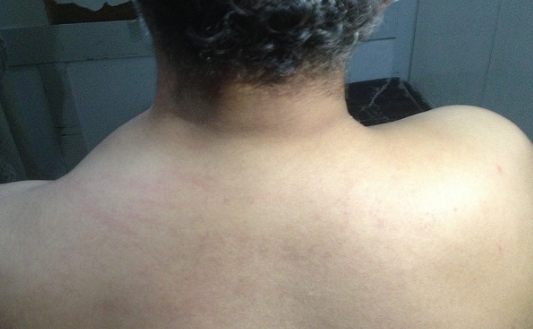The word cancer can have several different meanings. The dictionary defines cancer as a cell that undergoes abnormal uncontrollable cell growth, with the ability to spread to other parts of the body. The mutated cells then grow with endless replicative potential. Cancer has no morals; it will unashamedly invade any part of your body as quickly as you can blink, without any permission. Cancer has the ability to attack anyone – it does not seem to care whether you are a young child, an active young adult, or frail and elderly. Sometimes, it can ultimately become fatal.
To many people, cancer holds a more emotional meaning than simply abnormal and uncontrollable cell growth. To them, it brings them a great deal of hardship, worry, vulnerability, and most of the time it seems unbeatable. Cancer is the big bad wolf, trying to huff and puff and blow all of its victims down. A person could be on top of the world one day, and hanging on for dear life with cancer pulling on your back the next.
As an avid sports fan that marvels after so many athletes on television, I would never think that cancer could affect any of them. As a fan, my favourite players seem to be immortal. However, the incidence of cancer amongst professional athletes is more common then you think; just ask Mario Lemieux or Eric Berry. Both of these athletes were diagnosed with cancer at the pinnacle of their respective careers. Both were diagnosed with, and thankfully survived, a cancer called Hodgkin’s Lymphoma. Lymphoma is a type of cancer that affects blood cells; in these cases, it affects a specific type of white blood cells called lymphocytes. The primary focus of this review is to illustrate the main causes of Hodgkin’s Lymphoma and methods of treatment.

Figure 1. Illustration of lymphoma tumor. ( Creative commons, Public domain)
A British physician named Thomas Hodgkin first described Hodgkin’s Lymphoma in 1832. This white blood cell disease is most common in males over the age of 45, who display symptoms of enlarged lymph nodes. The disease is identified by the systematic spread of disease from one lymph node unit to the next by the expansion of orderly symptoms. While examining this disease, the presence of Reed-Sternberg cells are the characteristic of the findings (van den Berg et al. 1999).
Rigorous analyses of the disease causing patterns have recently indicated an infectious perpetrator as being responsible for the potential cause of this disorder. This infectious virus is called the Epstein-Barr virus (EBV) which is thought to be the cause of the rapid growth of the Hodgkin and Reed-Sternberg (HRS) cells (Thomas et al. 2006). Patients with Hodgkin’s Lymphoma who are also positive with EBV show an increase of expression of T-cell lymphoma genes. These genes include LMP1, LMP2a, and EBNA1 (Thomas et al. 2006). The Hodgkin and Reed-Sternberg cells have also displayed apoptosis immunity; the reasoning for this is still undetermined due to the fact that mutations affecting p53 or Fas genes are unlikely events in Hodgkin’s Lymphoma cells (Thomas et al. 2006). Research has shown that expression of EBV latent genes, in cases where EBV and Hodgkin’s Lymphoma are both present, could be involved in transformation by up-regulation of a certain transcription factor (van den Berg et al. 1999). Researchers also have discovered that HRS cells can add to the ineffective immune response. They do this by expressing immunosuppressive cytokines that attract the cells that immune to the bodies defence mechanism (van den Berg et al. 1999).

Figure 2. Photo of mixture of cells common in HL ( Creative commons Author: SA 3.0)
The first treatment ever created for Hodgkin’s Lymphoma was developed in the 1960’s, and it was called MOPP, a group of four drugs pooled together to attack the infected lymphocytes. The treatment involves four-week intervals that last for 6 cycles (Hutchings et al. 2006). To date, this form of chemotherapy has become more of a secondary treatment, often used as a back up for the sake of patients who may have allergies. Currently, ABVD is the treatment of choice. This procedure also consists of a four-drug mix. This strenuous treatment takes anywhere from six to eight months, depending on the severity of the tumour (Hutchings et al. 2006). There are other treatment options available, however they come with elevated risk; some are even breaking major health guidelines (i.e. Stanford V).
It is quite devastating to know that a person could be at the pinnacle of his or her career, and in a blink of an eye, it all changes. Cancer does not have any regard for anyone; it will attack with no hesitation. Hodgkin’s Lymphoma in particular, although very treatable, is unfortunate due to the fact that the specific mechanism that causes it is still not fully known. With the discovery of the mechanism, scientists will be able to synthesize a whole new regime of drugs to target Hodgkin’s Lymphoma.

Recent Comments